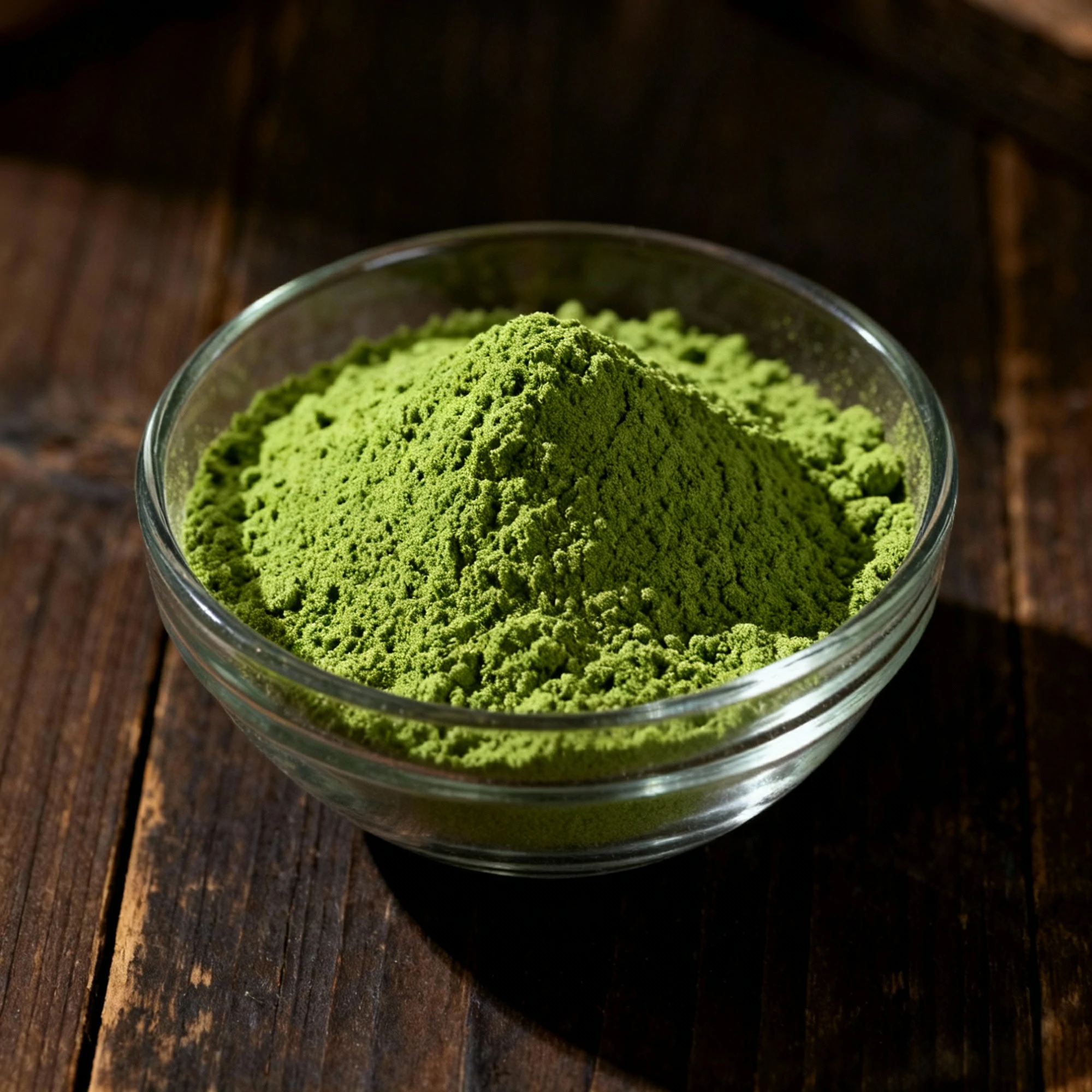

Barley Grass Powder
One unit of:20kg/carton
Product Info
What is Barley Grass Powder?
Derived from the dried, young leaves of the barley plant, Barley Grass Powder is a nutritional food ingredient used primarily to enhance the nutrient profile and provide natural green coloring in health drinks, supplements, and functional foods.
How is Barley Grass Powder made?
| Step No. | Production Stage | Key Action | Control Point & Note |
|---|---|---|---|
| 1 | Cultivation | Sowing & Growing | Use certified organic, non-GMO barley seeds. Soil must be tested and free from heavy metals and pesticides. Grow in a controlled environment or pristine field away from pollutants. |
| 2 | Harvesting | Cutting Young Grass | Harvest at the "jointing stage" (approx. 7-12 inches tall) when nutrient levels, especially chlorophyll and enzymes, are at their peak. Timing is critical for potency. |
| 3 | Cleaning | Washing & Rinsing | Thoroughly wash the harvested grass in multiple stages with purified water to remove all soil, debris, and microbes. A final rinse with ozonated water can provide sanitization without chemicals. |
| 4 | Dehydration | Drying the Grass | Employ low-temperature drying methods (e.g., freeze-drying or air drying below 41°C / 106°F). This is crucial to preserve heat-sensitive enzymes, vitamins, and the vibrant green color. Final moisture content must be below 5%. |
| 5 | Milling | Grinding into Powder | Use a high-speed pulverizer or jet mill that minimizes heat generation. The goal is to create a fine, uniform powder (e.g., 80-200 mesh) for better solubility and mouthfeel. |
| 6 | Sieving | Filtering the Powder | Sieve the powder through a fine mesh screen to ensure a consistent particle size and remove any larger fibrous material or clumps. This enhances product quality and consistency. |
| 7 | Quality Control Testing | Laboratory Analysis | Test samples from each batch for heavy metals, pesticides, microbial contaminants (like E. coli, Salmonella), moisture content, and nutrient profile to ensure it meets food-grade safety and quality standards. |
| 8 | Packaging | Filling & Sealing | Immediately package the finished powder into airtight, moisture-proof, and light-proof containers (e.g., foil-lined pouches). Nitrogen flushing may be used to displace oxygen and extend shelf life. |
Technical Specifications
| Solubility | water soluble |
| Storage Conditions | store in a cool, dry place, avoid direct sunlight |
| Shelf Life | 24 Months |
Applications & Usage
Common Applications:
Mechanism of action:
| Parameter | Barley Grass Powder |
|---|---|
| Functional Category | Nutraceutical; Whole Food Concentrate; Phytonutrient Source; Natural Colorant |
| Key Ingredients | Chlorophyll; Superoxide Dismutase (SOD); Flavonoids (e.g., Saponarin, Lutonarin); Vitamins (A, C, K); Minerals (Iron, Calcium, Potassium); Polysaccharides; Gamma-Aminobutyric Acid (GABA) |
| Mechanism of Action | Provides a rich source of antioxidants like SOD and flavonoids that neutralize reactive oxygen species (ROS), reducing cellular oxidative stress. Chlorophyll acts as a natural chelator and supports detoxification pathways. The dense array of micronutrients supports systemic metabolic functions. Its mineral content contributes to the body's acid-alkaline balance. |
| Application Effect in Product | Increases the nutritional density (vitamins, minerals) of functional foods and beverages. Imparts a natural green color and an earthy flavor profile. Enhances antioxidant capacity of the final product. Supports "superfood," "detox," or "alkalizing" product claims. Used as a key functional ingredient in green powder blends, smoothies, and nutrition bars. |
Comparison:
| Product Name | Category/Type | Key Features | Strengths (vs peers) | Weaknesses (vs peers) | Best Use Cases | Why Choose |
|---|---|---|---|---|---|---|
| Barley Grass Powder | Cereal Grass Powder | Rich in chlorophyll, vitamins (A, C, K), enzymes (like SOD), and minerals. | Milder, more palatable taste than wheatgrass. Balanced nutritional profile. | Lower in protein compared to algae powders. Not as potent in specific compounds as others. | Daily green supplement, digestive support, gentle detoxification, adding to smoothies. | For a balanced, enzyme-rich green powder with a less intense flavor than many alternatives. |
| Wheatgrass Powder | Cereal Grass Powder | Extremely high chlorophyll content, rich in vitamins, minerals, and amino acids. | One of the most potent sources of chlorophyll, leading to strong detoxification claims. | Very strong, distinct grassy flavor that is often disliked. | Intense detoxification, liver cleansing, high-potency nutrient boost. | When maximum chlorophyll and detoxification potential are the primary goals and taste is secondary. |
| Spirulina Powder | Blue-Green Algae Powder | Complete protein (all essential amino acids), high in iron, B vitamins, and phycocyanin. | Excellent source of plant-based protein (~60% by weight). Unique antioxidant properties. | Strong, distinct oceanic or fishy taste and smell. Sourcing is critical to avoid contaminants. | Boosting protein intake, energy enhancement, immune support. | If you need a complete plant-based protein source with unique anti-inflammatory benefits. |
| Chlorella Powder | Green Algae Powder | High in protein, iron, and chlorophyll. Known for binding to heavy metals. Often processed for digestibility. | Its primary strength is its ability to bind with heavy metals and toxins to remove them from the body. | Requires "broken cell wall" processing to be digestible. Strong flavor, can cause digestive upset for some. | Heavy metal detoxification, immune system modulation, supplementing vegan diets (source of B12). | For targeted detoxification of heavy metals and as a potent source of nucleic acids. |
| Moringa Powder | Leaf Powder | Packed with vitamins A & C, calcium, potassium, iron, and protein. Contains all essential amino acids. | More palatable, earthy/spinach-like flavor. Potent anti-inflammatory and antioxidant compounds. | Lower chlorophyll content than cereal grasses or algae. | General nutritional supplementation, reducing inflammation, adding nutrients to savory dishes. | For a highly nutritious green with a versatile flavor suitable for both sweet and savory foods. |
Technical Documents
Available Documentation
technical specification and COA available
Safety Data Sheet (SDS)
MSDS available
Certificate of Analysis (COA)
Quality assurance documentation
Technical Data Sheet
Detailed technical specifications